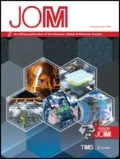Abstract
Although the use of aluminum in cars has been increasing for the past two decades, progress has been limited in developing aluminum auto bodies. In fact, most aluminum substitution has come in the form of castings and forgings in the transmission, wheels, etc. Car manufacturers have developed all-aluminum cars with two competing designs: conventional unibody and the spaceframe. However, aluminum is far from being a material of choice for auto bodies. The substitution of aluminum for steel is partly influenced by regulatory pressures to meet fuel efficiency standards by reducing vehicle weight, and to meet recycling standards. The key obstacles are the high cost of primary aluminum as compared to steel and added fabrication costs of aluminum panels. Both the aluminum and the automotive industries have attempted to make aluminum a cost-effective alternative to steel. This paper analyzes the cost of fabrication and assembly of four different aluminum car body designs, making comparisons with conventional steel designs at current aluminum prices and using current aluminum fabrication technology. It then attempts to determine if aluminum can be an alternative to steel at lower primary aluminum prices, and improved fabrication processes.
Similar content being viewed by others
References
M.N. Becker, “Aluminum: New Challenges in Downstream Activities,” JOM, 51 (11) (1999), pp. 26–38.
J.P. Clark, Techno-Economic Issues in Materials Selection, ASM Handbook Vol. 20 Materials Selection and Design (Materials Park, OH: ASM, 1997), pp. 255–265.
H. Hoegh, “An Economic Analysis of Aluminum Sheet and Prospects for Aluminum in the Autobody” (B.S. Thesis, MIT, 2000).
F. Katrak, D. Poltis, and J. Morton, “Steel vs. Aluminum vs. Polymers: The Battle for Automotive Body Applications in the 21st Century” (Paper presented at Metal Bulletin’s 12th Int. Conf., September 1997).
A. Kelkar, “Analysis of Aluminum in Auto Body Designs and its Strategic Implications for the Aluminum Industry” (M.S. Thesis, MIT, 2001).
A. Kelkar, R. Roth, and J.P. Clark, “Cost Implications of Learning in the Development of Aluminum Autobody Designs,” submitted to JOM.
H. Marti, “The Cost Modeling of Automotive Body-In-White Assembly Using Relational Databases” (B.S. Thesis, MIT, 1997).
F.W. Ostermann, Aluminum Materials Technology for the Automobile (German Press, 1987).
B. Poggiali, “Production Cost Modeling: A Spread sheet Methodology” (Degree Thesis, MIT, 1985).
C.F. Pratten, Economies of Scale in the Manufacturing Industry (Cambridge, U.K.: Cambridge University Press, 1971).
Author information
Authors and Affiliations
Additional information
Editor’s Note: A hypertext-enhanced version of this article can be found at www.tms.org/pubs.journals/JOM/0108/Kelkar-0108.html
For more information, contact Richard Roth, Massachusetts Institute of Technology, E40-202, 77 Massachusetts Avenue, Cambridge, Massachusetts 02139 USA; e-Mail rroth@mit.edu.
Rights and permissions
About this article
Cite this article
Roth, R., Clark, J. & Kelkar, A. Automobile bodies: Can aluminum be an economical alternative to steel?. JOM 53, 28–32 (2001). https://doi.org/10.1007/s11837-001-0131-7
Issue Date:
DOI: https://doi.org/10.1007/s11837-001-0131-7




